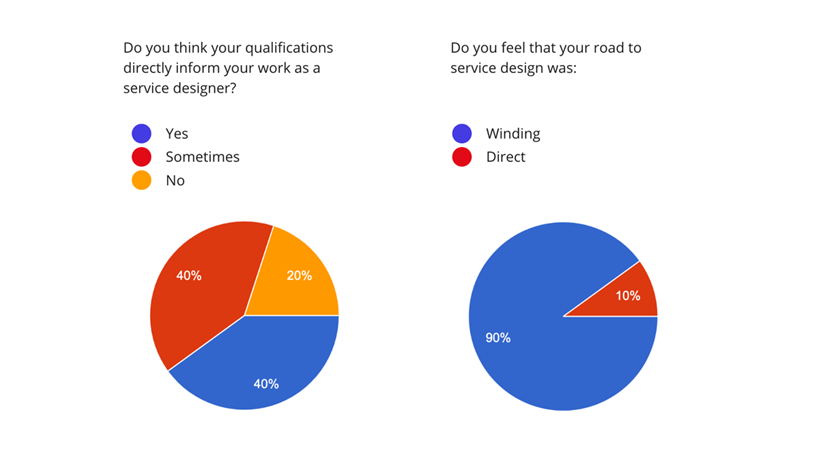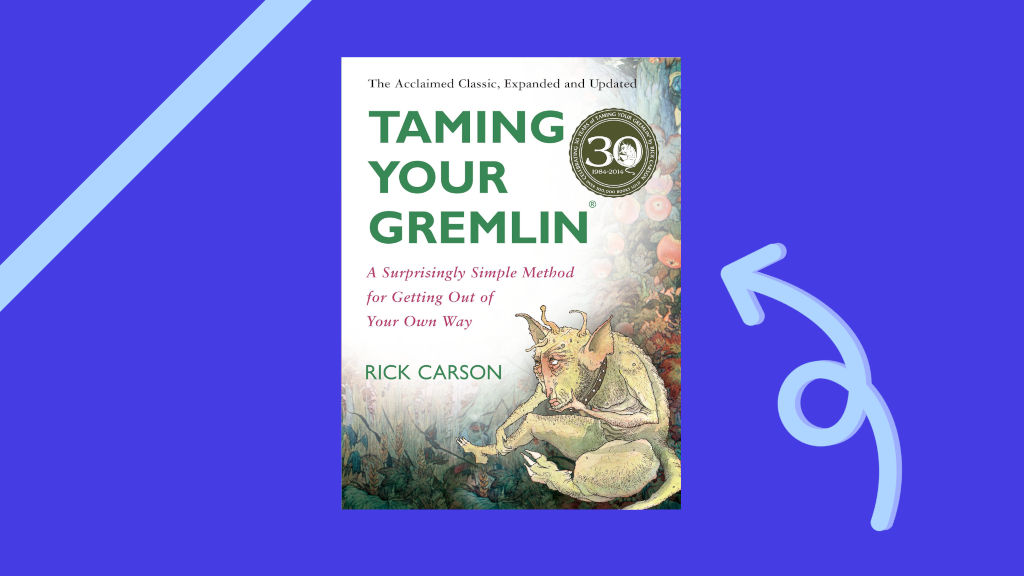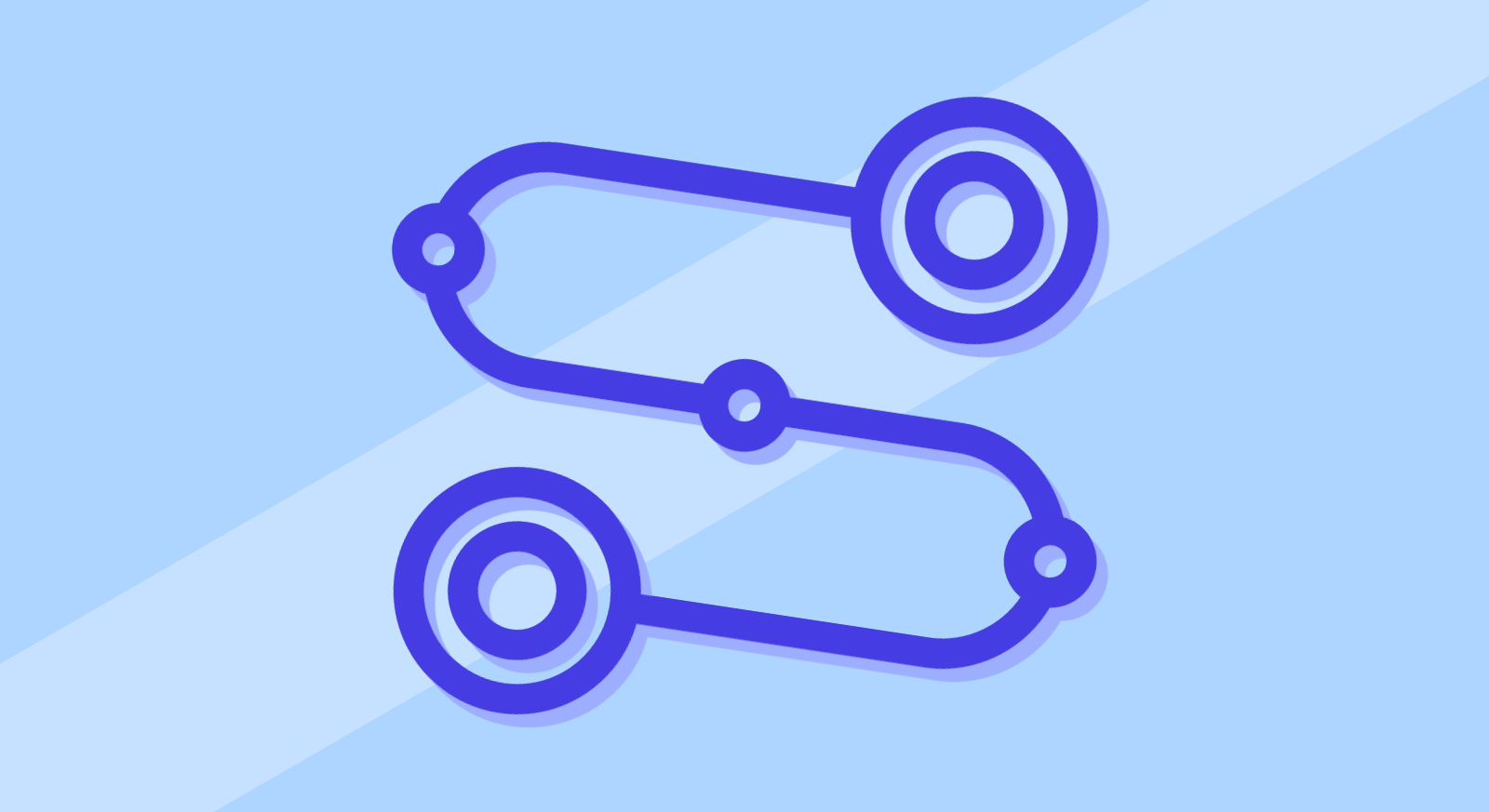I had a winding journey to service design. That might be the case for you, too, if you’re considering making the same move.
I started out in national youth theatre, then studied psychology, moved into learning and development, then interned in design at a charity, and eventually ended up working as a user researcher in health.
When I was looking for the next step in the public sector, working for NHS Scotland, I was apprehensive about transitioning from a user researcher to a service designer.
When I applied for a service design job at SPARCK I felt like was doing the things in the job description, but was I ready for the title?
At SPARCK, user centred design is split into five practices:
- strategy
- service design
- product design
- content design
- user research
User research would have been my comfort zone, but service design was where I wanted to be.
After getting to know my colleagues, I realised many of them, grounded in these practices, would move across roles on projects, flexing different muscles if they wanted to stretch their skills.
I was curious about whether many of my colleagues had a winding journey to service design like me.
The magic is in variety
Each colleague I chatted with was at a different stage in their design career.
Some are researchers just starting to dip their toes into service design methods on projects. Others are veteran designers.
Their career starting points were diverse, from fashion design to financial services.
Some began as business analysts and self-described “indie rockstar wannabees”. Others were change managers.
Quite often, this diverse experience was the fairy dust that helped people look at a problem differently, understand the client's language, or manage change in the most creative ways.

A survey of our service design practice shows SPARCK has a fascinating mix of both traditional and non-traditional career paths.
Despite this, only 20% felt that their prior experience did not inform their work as a designer. Diversity generates innovation.
Will the real service designer please stand up?
Many of my colleagues talked about how the remit of a service designer can be variable depending on the project and its scope.
That’s why the remit of a service designer can mean different things in different projects, moments, and even specific workshops.
In one project, your focus might be on the customer journey across several services, the ecosystem of a regulatory authority, or how to connect different people around a newly defined purpose.
“I simplify SD to three questions,” said Rebecca Laycock, one of SPARCK’s culture leads. “Why are we here, who are the users and what do they need? Knowing this intimately helps guide you on most projects.”
The beauty of having defined practices in SPARCK means we can get into the nerdy detail of what qualities various types of designers have.
For us this means:
- strategic thinking
- interrogating service components
- co-designing with different user segments
- identifying user needs and experiences
- communicating service value
- prototyping, testing and iterating
- building relationships
Still, it’s no substitute for practical work. I was curious how people felt when applying these competencies on their projects.
Are you zooming in and out?
I asked colleagues how their work changed when working in a service design role.
Many talked about their shift in focus. Practically this meant mapping across a service, orchestrating across different design roles, and zooming in and out to focus on different user experiences.
The most significant change for everyone was the mindset shift from looking at a specific user experience, to challenging the value of the service more broadly.
“If you have found yourself working on one step in a user's journey and wondering about the wider service value to its users, then you're thinking like a service designer,” said my colleague, Stephen Salhany.
“If you are passionate about people and creating experiences you can learn the rest from others,” said Mel Galliwade.
If you find yourself questioning whether we are building the right experiences, and whether we’re focusing on the right things, those are strong service design instincts.
Taming your gremlin
It wouldn’t feel authentic to end this article without mentioning something that stops many from calling themselves service designers – imposter syndrome.
Of the colleagues I interviewed, 70% mentioned facing imposter syndrome when it came to identifying themselves as a service designer.
When working with clients we can often face affirming our purpose, the purpose of design, and the value of our work.
While I was in a senior user researcher before this, I wondered if my winding journey here qualified me to work alongside the more classically art-school trained designers.
I wondered if the transition from public sector (NHS) to private sector would be jarring.
I knew I had some gaps but was eager to learn.

One morning, a gift from my squad lead, Anne, arrived at my door. It was a copy of Taming your Gremlins by Rick Carson.
Grounded in mindfulness, it taught me a lot about getting out of my own way.
Everyone has a gremlin inside them that finds fault, excuses and creates negativity at times. A gremlin is one’s own personal saboteur. You must tame it.
If you’re thinking about transitioning to a role in service design, don’t let your gremlins hold you back. There’s a community of people in SPARCK at different points on their winding path, supporting each other as we find new ways to solve user problems.
Big thanks to Alice Eastwood, Imogen Aylwin, Mel Galliwade, Rebbeca Laycock, Rahima Ali, Kerrie Hughes, Amalia Robinson , Stephen Salhany and Julia Silva who collaborated on this article, sharing their thoughts and experiences.



